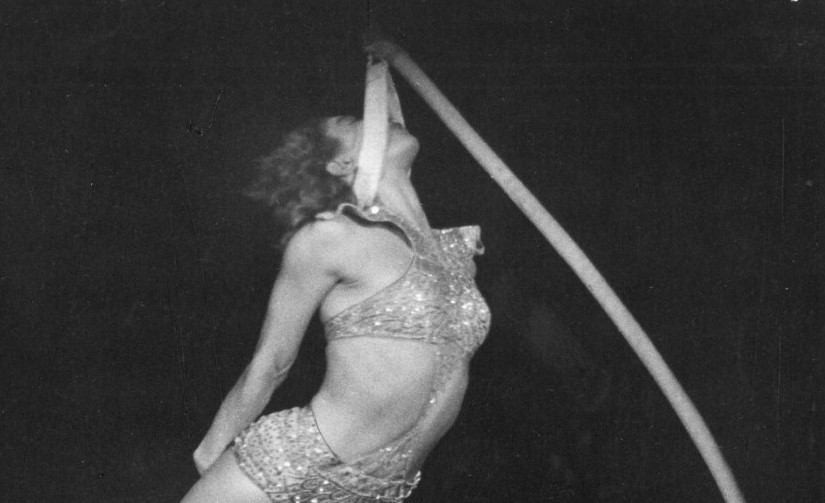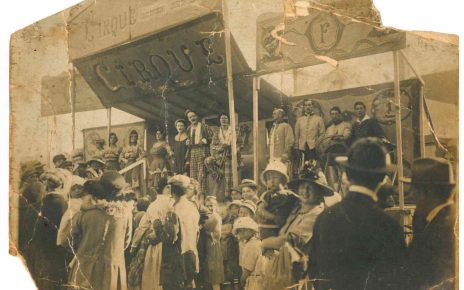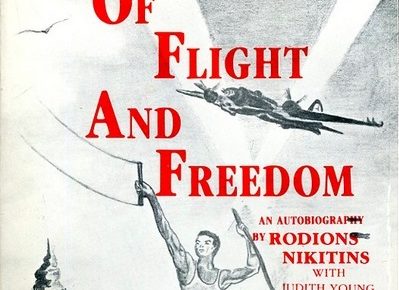Alma Vizla was born in 1915 in the small Latvian town of Opekalna. There is an almost total lack of information about her family. The only thing known is that her (probably older) brother Viktor became an acclaimed soccer player – which points to the increasing popularity of the physical culture movement flourishing at that time in many parts of the world. At the age of five, Alma began to study ballet in Riga under the instruction of Beatrise Vīgnere, a major figure in Latvian modernism and former pupil of the legendary dancer Isadora Duncan. After having completed her training, she performed with the National Latvian Ballet until the early 1930s. Some photographs dating from 1931, which show her barefooted and wearing a loose tunic, suggest her affiliation to a New Dance group. Concomitantly, she may have earned a supplementary income as ballet girl at the circus. Around 1933, she started to practice acrobatics. At the latest in 1938, after cooperation with two travelling circuses, the Salamandra and the (probably Sweden based) Ringa King, she turned her interest to bareback riding and joins the prestigious Circus Salamonsky, which has a stationary venue in Riga since 1888 (besides Odessa and Moscow). However, shortly later she gave up equestrianism and became an aerialist.
Around 1937/1938, Alma met Alberto Piaia (born 1895), a strongman with Italian ancestry who originated from the French-Luxembourgian border. Reportedly Aberto ran away from home and joined a traveling circus at the tender age of eight; there, he was working without payment in order to learn the circus skills. It does not count much whether this story is true or not. Rather, it is interesting to observe in this biography the long-lasting concepts of circus (going back to Charles Dickens’ Hard Times, 1854) as a vehicle of emancipation from ordinary social constraints into a new sphere of activities and accomplishments. At the age of fourteen, Alberto joined the prestigious Zirkus Althoff in Berlin and made his debut with a balancing act. After World War I, he started touring Europe, especially Italy, Austria, Czechoslovakia, and Germany, where he performed in well-known establishments like Deutsches Theater (Munich), Hansa-Theater (Hamburg), Apollotheater (Nuremberg) and Krystallpalast (Leipzig). He gained celebrity particularly through iron jaw acts – for example by balancing his female partner on a several meters high ladder he holds with his teeth. Probably he showed such a feat also at the Circus Salamonsky in Riga.
Alma and Alberto’s activities remained opaque until 1939. As it emerged from documents in custody of the National Archives of Luxembourg, Alma arrived in the Grand Duchy on January 6, 1939, after having performed in Basle, Nice, and Cannes. Here she performed during two weeks at the Salle Alfa, a renowned event venue located in the capital city. Afterwards, she left for Magdeburg, Germany. Later that year, Alma and Alberto travelled both to Sweden, where they got married in Malmö on November 11th. Henceforth, they performed together under the name Alma and Alberto Piaia. It is probably in Sweden, that they experienced the outbreak of World War II.
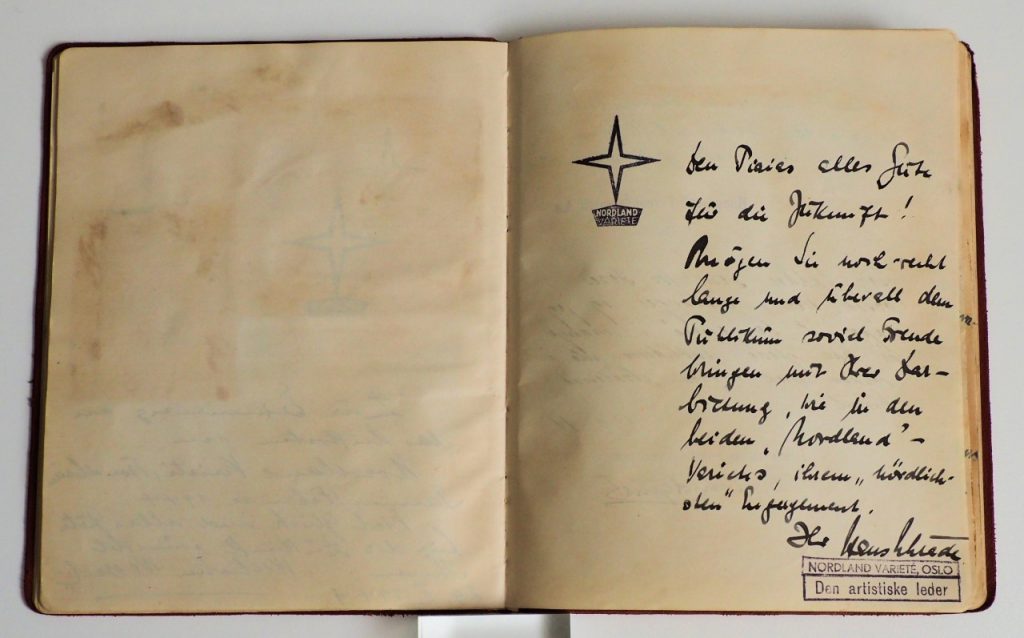
The artists’ Livre dʼOr (Golden book), although incomplete, provides information about their schedule between Mai 1940 and June 1946. According to these records, during the year 1940 they performed repeatedly in the Protectorate of Bohemia and Moravia, for instance in the cities of Prague, Brno, and Ostrava. From 1941 on, they resided primarily in Denmark (Copenhagen, Odense Aalborg, Fredericia, Kolding, Nyborg, Randers) and Sweden (Stockholm, where they performed, among other venues, at the prestigious Chinateatern, but also Ystad, Trelleborg, Lund, Hälsingborg, Halmstad, Sveg, Kristinehamn, Örebro, and Göteborg). From 1944 onward, they resided in Norway (Oslo, Bergen, Trondheim, Haugesund, Arendal, Fredrikstad, Tonsberg, Drammen).
Likewise, and primarily at the end of 1941/beginning of 1942, they completed shows in Germany, for example in Berlin, Leipzig, Cottbus, and Dresden, as well as in Prague, Vienna and Poznan; in January 1943 they appeared also in occupied Strasbourg. Hence, they obviously spend the wartime years (except neutral Sweden) exclusively in countries and regions occupied or controlled by the Third Reich. To date, virtually nothing is known about their attitude towards National Socialism or about their political conduct in more general terms. A single entry in the Livre dʼOr, made in January 1942 by an organizer located in Vienna, contains the (later blackened) greeting phrase “Heil Hitler!”; only one picture from the artists’ rich collection of visual images bears the seal of the Nazi leisure organization Kraft durch Freude (Strength Through Joy). With the war over, Alma und Alberto remained in Scandinavia until June 1946, above all in Denmark and Sweden. They will continue to feel emotionally bound to this part of Europe: Thus, in 1968 Alma accomplished her show career with an extensive tour through Norway.
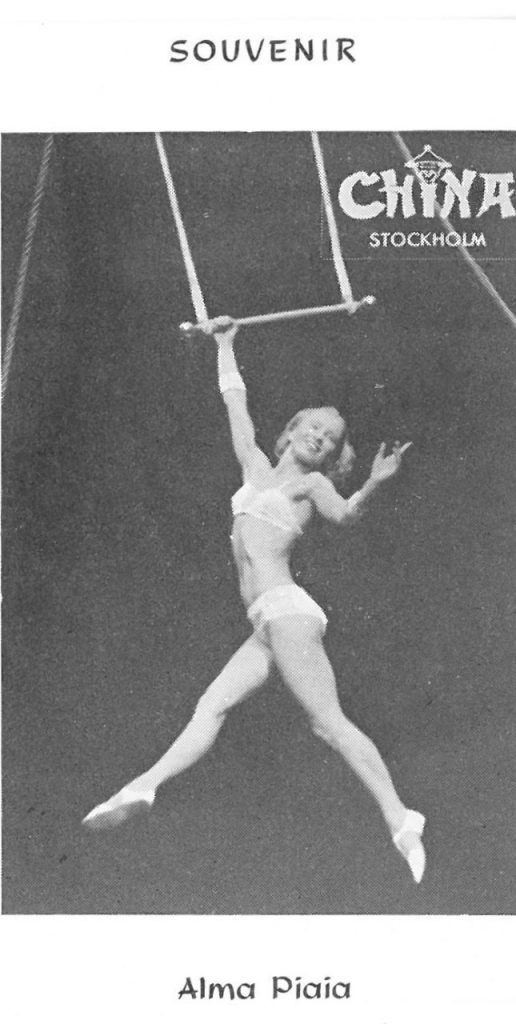
The post-war period initiated the most successful part of Almaʼs career. Now she performed at the most prestigious circuses of the continent, such as Circus Krone (Munich), Cirque Medrano and Cirque dʼHiver (both in Paris), Billy Smartʼs New World Circus (London) and the Tower Circus (Blackpool). In search of increased artistic liberty, she changed from the trapeze to the free-swinging vertical rope. Soon, experts acclaim her as the best aerialist of her generation and the legitimate successor of the unequalled Lillian Leitzel (fallen to death in 1931). Her career acquired a notable momentum through the engagement with Ringling Bros. and Barnum & Bailey, the biggest circus worldwide, from 1949 onward. During her residence in the USA, Alma participated at the shooting of the monumental circus movie The Greatest Show on Earth directed by Cecil B. DeMille (1952), which evoked the (fading) grandeur of the American Circus, than facing important social, economic and cultural challenges. She was involved in a total of five productions; in the circus drama Trapeze (Carol Reed, 1956) she doubled the world star Gina Lollobrigida.
After the retirement from the arena at the end of the 1960s, Alma and Alberto settled in the city of Ettelbruck at the hearth of the Grand Duchy. There, they found the first and (at that time) only circus school in Luxembourg. They appeared with their students at various national as well as international events, such as the BBC Childrenʼs Show on Christmas 1972. At the same time, they prepared actors, dancers and singers for their performance on trapeze or vertical rope at the charity event Stars in der Manege (sent on Eurovision between 1959 and 2008). Moreover, after the achievement of a diploma, Alma worked as a physical education teacher in different Luxembourgian municipalities. Alberto Piaia passed away in 1984; Alma followed him in 2016, at the grand age of 101. Since 2018, their legacy is preserved at the Centre national de littérature in Mersch, where it arrived through the generous donation of a private collector.
Author: Daniela Lieb
Main sources:
Archives nationales de Luxembourg, ANLux, J-108-0466230, Piaia Albert, Vizla Alma.
Centre national de littérature, CNL L-403, Alma Piaia Collection.
Featured image (above): Performing in Vienna, probably early 1940s. Photographer: Fritz Peyer. CNL L-403, Alma Piaia Collection.
